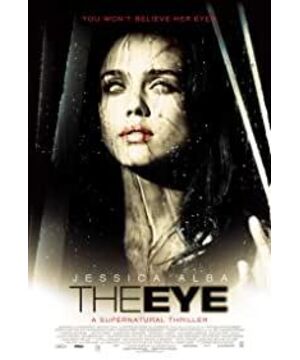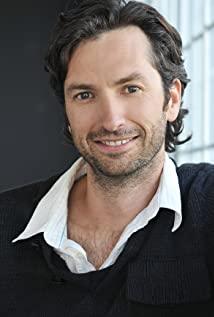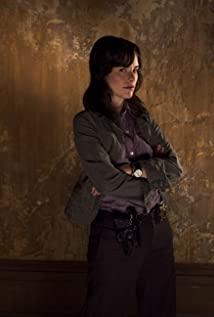One is the profession of the protagonist, the blind woman. In the American version, she is a violinist. As for the original version, I don't remember that there is such an explanation. It is a good arrangement for the protagonist to have a musical background, because for a blind person, music is undoubtedly an excellent way to communicate with the world. Blind people’s hearing is inherently more sensitive than ordinary people, and those who play music are more sensitive. Such people may be more dependent on hearing, and it will be more difficult to adapt to the sudden restoration of vision.
The second is the handling of blind girls. The original version of the display is that the dying person has left, and the image of the death messenger appears very specifically in the US version. This should be derived from the different understandings of death between Eastern and Western cultures. Eastern people’s understanding of death tends to be more mysterious. Correspondingly, the image of death in Western culture should be more specific, always in the image of the god of death. Appear.
The third is the process of communicating with the donor’s mother when going to the hometown of the cornea donor to trace the roots. In the original version, the process was not smooth because the mother of the deceased was not very cooperative and was unwilling to tell the truth until the blind girl repeated the process of hanging the deceased under the guidance of the deceased’s soul, and the mother’s closed feelings broke out. She felt resentment for her daughter's leaving without saying goodbye and leaving herself alone. After this incident, she forgave her daughter. The soul of the dead who remained in the eyes was also released. This kind of feeling may not be understood by American directors and screenwriters. Therefore, the process is simplified. After the mother recognizes her daughter's eyes, she tells the story, and then she died. The daughter's resentment was left to the big explosion at the end of the film.
The last is the big bang, which is also the biggest difference between the two films. In the original version, the blind girl failed to persuade everyone to leave the scene. As a result, a tragedy inevitably occurred. The blind girl’s eyes were injured and blinded again in the explosion. In the US version, although the blind girl was finally injured and blind again, she succeeded, despite a little trouble, but on the whole very smoothly rescued everyone, so she fell into the cliche of Hollywood movies hopelessly. The fate and tragedy of the original version is gone. Especially the signs, the scenes that the blind girl always appeared in front of her after seeing the light again, were confirmed before the explosion. Westerners seem to like this kind of thing very much, and they are often seen in other horror or thrillers. arrive. The film explains that this is the revelation of the blind woman from the dead who donated the cornea. However, can the dead person foresee the occurrence of a great tragedy after her death and give appropriate reminders?
In terms of the degree of horror, the original version is better. Of course, there are preconceived factors, and the plot and other factors are already known when watching the US version. It is the director of the East that really scares the Orientals. In addition, the performance of the actors will also add or subtract points for this.
When it comes to the performance of actors, there is no way around the issue of beautiful women's acting skills. This time, I have to say, I said before that "beauties don’t need acting". It seems that I was wrong. The beautiful lady Jessica Alba also has acting skills. Although compared with "Heaven Queen" Li Xinjie, she looks a little immature. But for the interpretation of the blind girl, she was still quite satisfactory. She looked very fascinating, worried and suspicious.
View more about The Eye reviews











